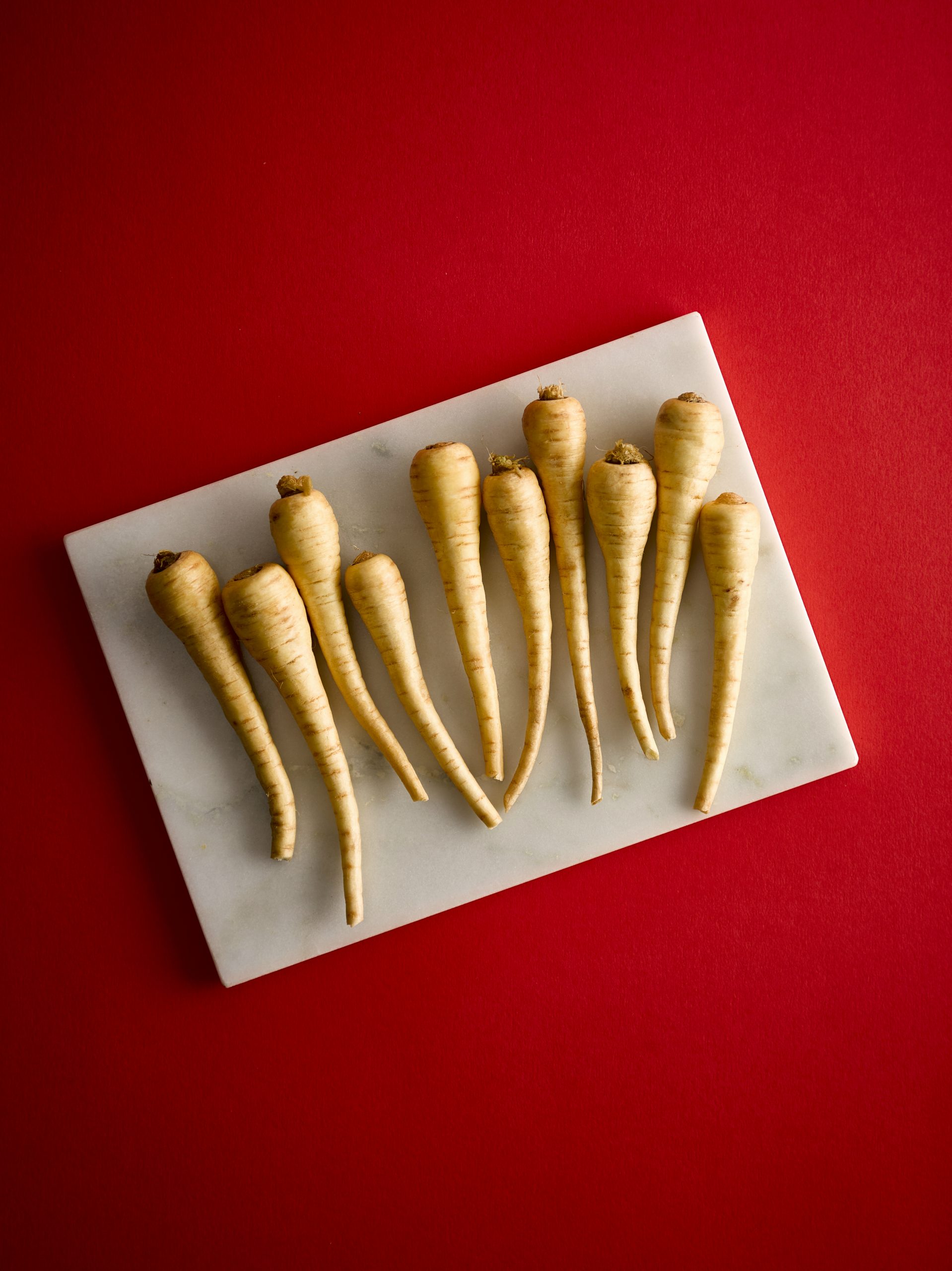Photo courtesy: www.pushdoctor.co.uk/blog/why-are-parsnips-good-for-you
Parsnip Power
One of my son’s first tastes of solid food was dirt licked from a freshly dug parsnip. He didn’t yet have the teeth to chew into the ivory taproot itself, but his attempts to do so sure got it clean.
It was wintertime in New Mexico, and his first winter anywhere. We were visiting a friend at his farm, and I was helping him dig parsnips that had been planted the previous summer, and kept in the ground through the winter under a heavy layer of mulch. He’d also planted carrots, a close relative of parsnip, and kept them under mulch as well.
As winter wore on the carrots began to get woody, but those parsnips stayed tender, and grew sweeter, until March, when we dug the last one. By that time I had conducted extensive trials. I made oven-roasted parsnip frites and pan-fried parsnip pudding. I mixed parsnips into mirepoix, fried rice, and hash browns. I added parsnips to the root mix beneath roasting birds, and to the soup made from the leftover bones.
If you’re ever at a loss for what to do with a parsnip, a good rule of thumb is to do with them whatever you would do with a carrot. Boiled and buttered, cooked with peas or chopped in stew, to name a few. Carrots and parsnips cook well together, too.
Back in the days before the widespread use of sugarcane and sugar beets, parsnips were used to make sweetener. Winter harvested parsnips like the ones we dug can be especially sweet, as some of their starches have broken down into sugar. Eventually I added baby food to my list of parsnip dishes.
In Medieval times, people survived northern European winters on parsnips. Roman Emperor Tiberius was such a fan of parsnips he accepted them as tribute from the region of present-day Germany.
Parsnips eventually lost ground to potatoes brought back to Europe by New World explorers. Potatoes don’t have that nutmeggy flavor, and they lack the parsnip’s diversity of nutrients like folic acid, fiber, calcium, and carotenoids. But spuds yield more pounds per acre, and more calories per pound, than parsnips. And when survival is a priority, it pays to grab every calorie you can get.
But when you’re not in danger of starving, why not diversify your diet, for both nutrition and flavor. Adding the occasional parsnip to your menu will add an aromatic dose of earthy sweetness.
While parsnips are still a niche ingredient in most of the U.S., parsnip culture remains strong in Europe, especially in the UK. The Guardian once ran a story claiming parsnip wine to be one of finest wines on the planet. And the Brits also use parsnip as slang for shapely men with broad shoulders and narrow waists – the shape that my parsnip-eating son is growing into. In the comment sections of parsnip related online content, Brits often take the opportunity to remind the world that the biggest parsnips are from the UK.
So let’s all thank a Brit for keeping the parsnip fire burning through the dark years. And here is an easy, British-style parsnip recipe to get you started down the parsnip pathway.
Mashed parsnips and carrots in cinnamon sauce
This sweet, earthy side dish will accompany any meal. For a more savory version, replace the cinnamon with an herb like thyme. You can also omit the carrots and double up on the parsnips, or replace the carrots with potatoes. And for a richer version, add some cream at the very end.
1 large parsnip (about ½ pound), peeled and cut into ½-inch thick rounds
The same amount of carrot, peeled and cut into ½-inch thick rounds
2 cups water or stock
1 large clove of garlic, minced
1 medium onion, minced
2 tablespoons butter or olive oil
2 teaspoons cinnamon
Salt and pepper to taste
Add the parsnips, carrots and stock or water to a small pot or pan with a tight-fitting lid. Simmer until the liquid is nearly gone.
Meanwhile in another pan, sauté the onions in the butter or oil until they become translucent.
Back in the first pan, when the liquid is nearly gone, add a clove of garlic and mash the parsnip and carrots together with a potato masher or the bottom of a cup – or whatever technique you might employ to make mashed potatoes.
Add the mashed parsnip and carrot to the onions, on low heat, and add the cinnamon. Stir it together and season with salt and pepper.
